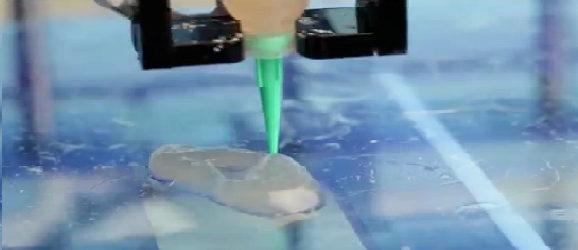Forget Contour Maps! Inkjet Printers Now Used in Cartilage Implants
This article is more than 2 years old
You know how expensive printer ink is? I’m guessing so, since it’s been that way forever. Well, how expensive do you think an ink cartridge would be if it contained cells, and could make cartilage implants happen with ease? Five dollars more, at least.
The adapted ink cartridge, when used with a traditional ink jet printer and in conjuntion with an electrospinning machine, is the subject of a paper for the journal Biofabrication. Ink jet printers have already been used to create prototypes for various human organs and tissues, but this is the first time solid cartilage has been created.

For their experiment, the researchers from the Wake Forest Institute for Regenerative Medicine used the electrospinning machine like a souped-up cotton candy machine to generate super-thin flexible polymer fibers. A flat mat of this synthetic material is combined with layer after layer of a cell solution made from the cartilage of a rabbit’s ear, injected using the inkjet printer. The polymer formartion is controllable and becomes porous enough to allow for more accessible cell integration within. But it’s also sturdier than purely biological materials, allowing for the integrated cells to connect with the surrounding tissues. The constructs themselves are square, with a diagonal of 10 cm and a thickness of 0.4 mm.
For testing, the researchers loaded the constructs with weights of various sizes, and after a week, tested to make sure the cartilage cells were still alive. More interestingly, mice were also implanted for two, four, and eight weeks to test the constructs’ performance in actual living creatures. After the full eight weeks, the constructs mimicked results typical for elastic cartilage, and their true potential was realized.
The researchers see a future where MRI scans of injured body parts can be used as blueprints for specifically matched constructs. I’m assuming the material used for, say, a knee or shoulder, would need to be much stronger than whatever would be used to fix a pinkie finger. Should their progress continue, I wouldn’t be surprised if the NFL bought the company out for privatized use.












